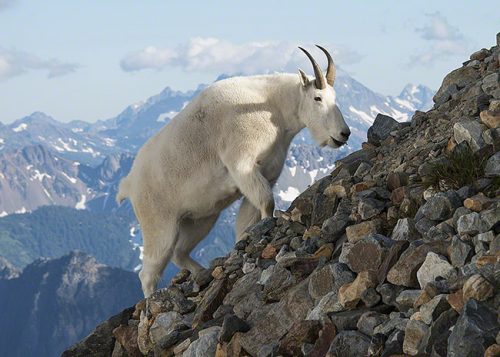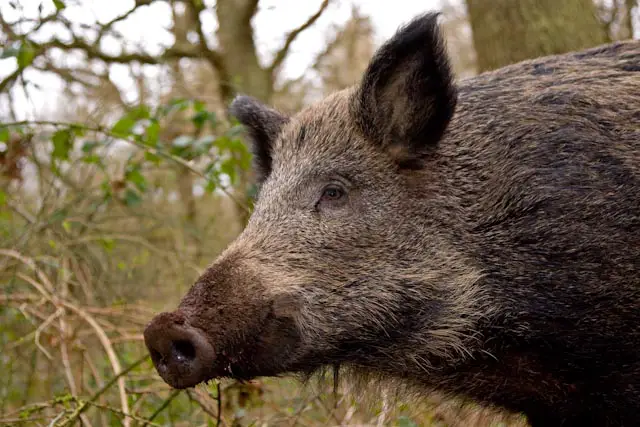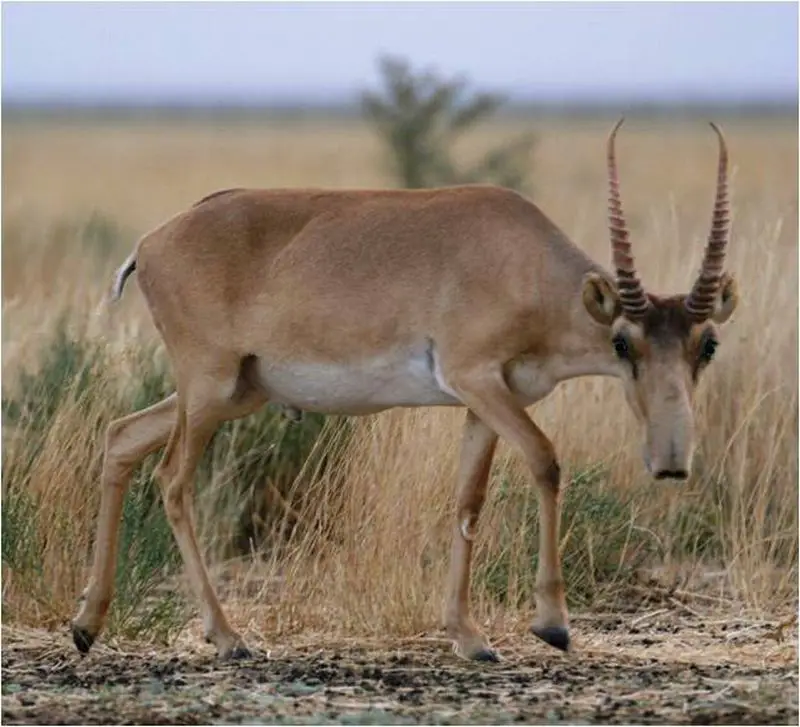The mountain goat (Oreamnos americanus) is a North American herbivorous mammal. It finds its homes in alpine and subalpine habitats. Rocky mountain goat is the other name of mountain goat. It is an even-toed ungulate and it belongs to the family Bovidae. The mountain goat is one of the highest living large mammals.
Mountain Goat Facts
Anatomy
- The mountain goat is completely white from head to toe except for the horns which are slaty-grey in color.
- The male is called billy while the female is known as
- Mountain goats have got beard and greyish black horns. The length of the horns is about 15–28 cm (5.9–11.0 in). There are rings on the horns which also determines the age of the animal.
- Adult goats average 120–179 cm (47–70 in) in head-body length with a 10–20 cm (3.9–7.9 in) long tail.
- The shoulder height of an adult male is about 1 meter. Males are likely to be heavier than females.
- Males have longer horns and beards as compared to females. Besides the horns of males are more curved than those of females.
- Adult goats average 45 and 140 kg (99 and 309 lb) in weight.
- The goat’s body is all protected with dense white wool along with an external layer of longer white hairs.
- The molting occurs in spring during which they often rub their skin against trees.
- Mountain goats live in some of the coolest environments where wind’s speed is around 100 mph (160 km/h). They are able to survive extreme temperatures of about −50 °F (−46 °C).
- The goat’s feet are well adapted to climbing on rocky mountains which have steep slopes. This is quite unique in mammals of this much size.

Geographic Range
- Mountain goats are native to North America. They move along the steep slopes of Rocky Mountains. They also occur in the Cascade Range and Western Cordillera.
- Rocky mountain goat’s range extends British Colombia, Idaho, Alberta, Washington, Montana, southern Yukan, to as far as southern Alaska.
- In Alaska, mountain goats are mainly found in the Chugach Mountains. Their population has been introduced in Oregon, Colorado, Nevada, South Dakota, Wyoming, and Utah.
Habitat
- Mountain goats are one of the few medium-size mammals probably the only herbivorous mammal to make its habitat at an altitude of 13,000 feet (4,000 m) above the sea level.
- They prefer alpine or subalpine areas because these are above the tree line. Depends on the season mountain goats also migrate between elevations.
Behavior
- The mountain goat is thought to move quite regularly to make sure that it finds food in alpine opening and also to escape predators.
- Nannies are very aggressive while protecting their territory and kids.
- In a group of nannies, one of them must be dominant over which the fight occurs.
- Sometimes they can be aggressive toward humans.
- The global population of mountain goats is around 75,000 – 115,000. It includes both native and introduced species.
Feeding Ecology & Diet
- Rocky mountain goats are herbivorous mammals and they like to consume short grasses. The goat’s diet includes ferns, lichens, herbs, mosses, sedges, and grasses.
- At high altitudes they seem to rely on low-growing conifers and shrubs.
- The captive goats are fed with alfalfa, grass, vegetables, fruits, and grains.

Reproductive Biology
- The average lifespan of mountain goats is about 12 – 15 years in the wild. In captivity they are expected to live for 16 – 20 years.
- The breeding ranges from late October to late December. During courtship displays males continue looking at females for longer times.
- Outside the breeding season billies will move in small groups of 2 – 3 individuals. Nannies on the other hand will form loosely-form groups of up to 50 animals.
- The birth occurs in May or June after a gestation period of about 180 days.
- The kids average 3 kg (7 lb) in weight at birth. They will run and climb up the mountains few hours after the birth.
- The average weaning period is about 30 days. Kids continue to follow their mother for almost a year.
- Predators of mountain goats include wolverines, bears, wolves, cougar and lynxes. The primary predator of young goats is golden eagle.
Conservation Status
Least Concern





